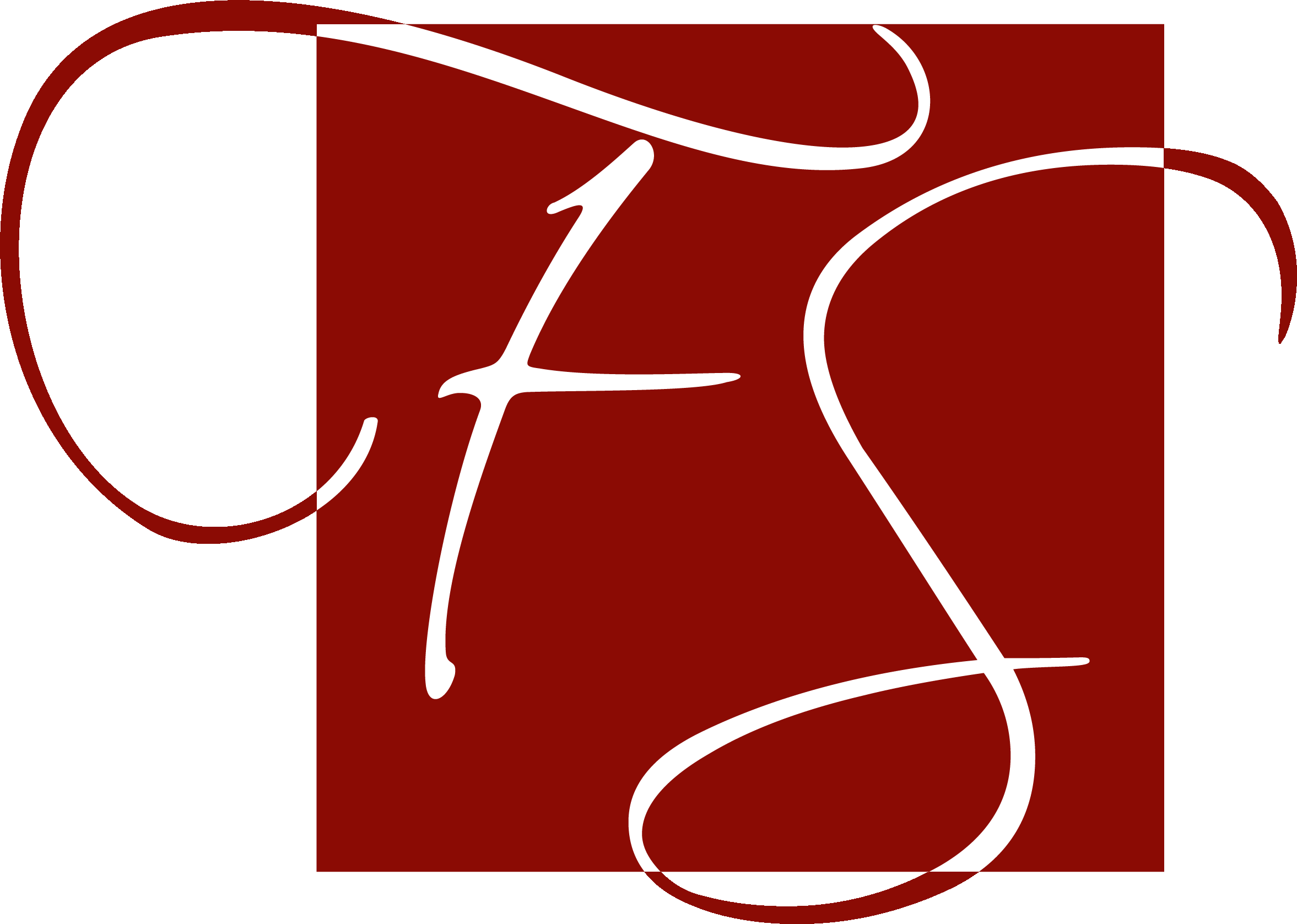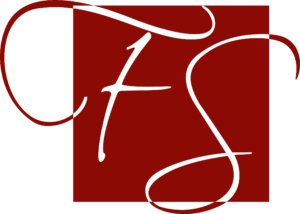Art is an expression of life’s emotions, stories and functional needs through any medium our minds can conjure – pencil, paint, wood, fabric, photography, dance, theater, interior design … the mediums are limitless. Each of us experiences art daily, although over time, some of us may have grown numb to its existence. Art, as we commonly think of it, does not necessarily have to hang on a wall or be put on display. It can blend in with our very existence.
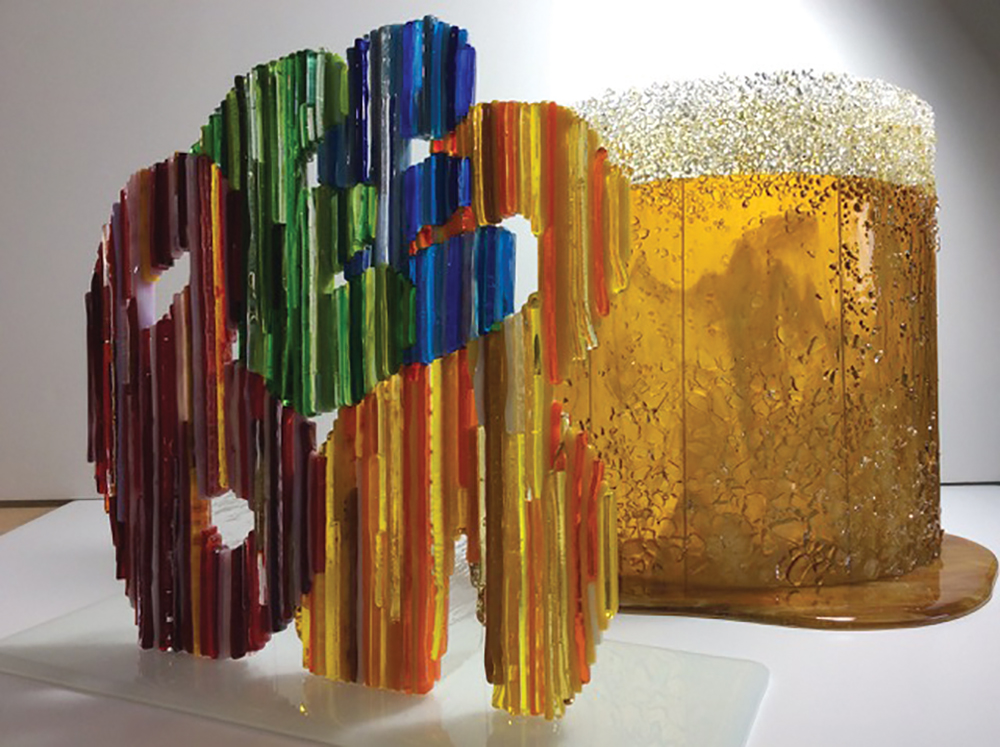 “Art is in every design,” says Deana Hinchcliff, leather sculptor and former president of Texas Sculpture Association. “It touches everything we have. It’s not just the pictures, the sculptures and the actual pieces of art. Art is everything.”
“Art is in every design,” says Deana Hinchcliff, leather sculptor and former president of Texas Sculpture Association. “It touches everything we have. It’s not just the pictures, the sculptures and the actual pieces of art. Art is everything.”
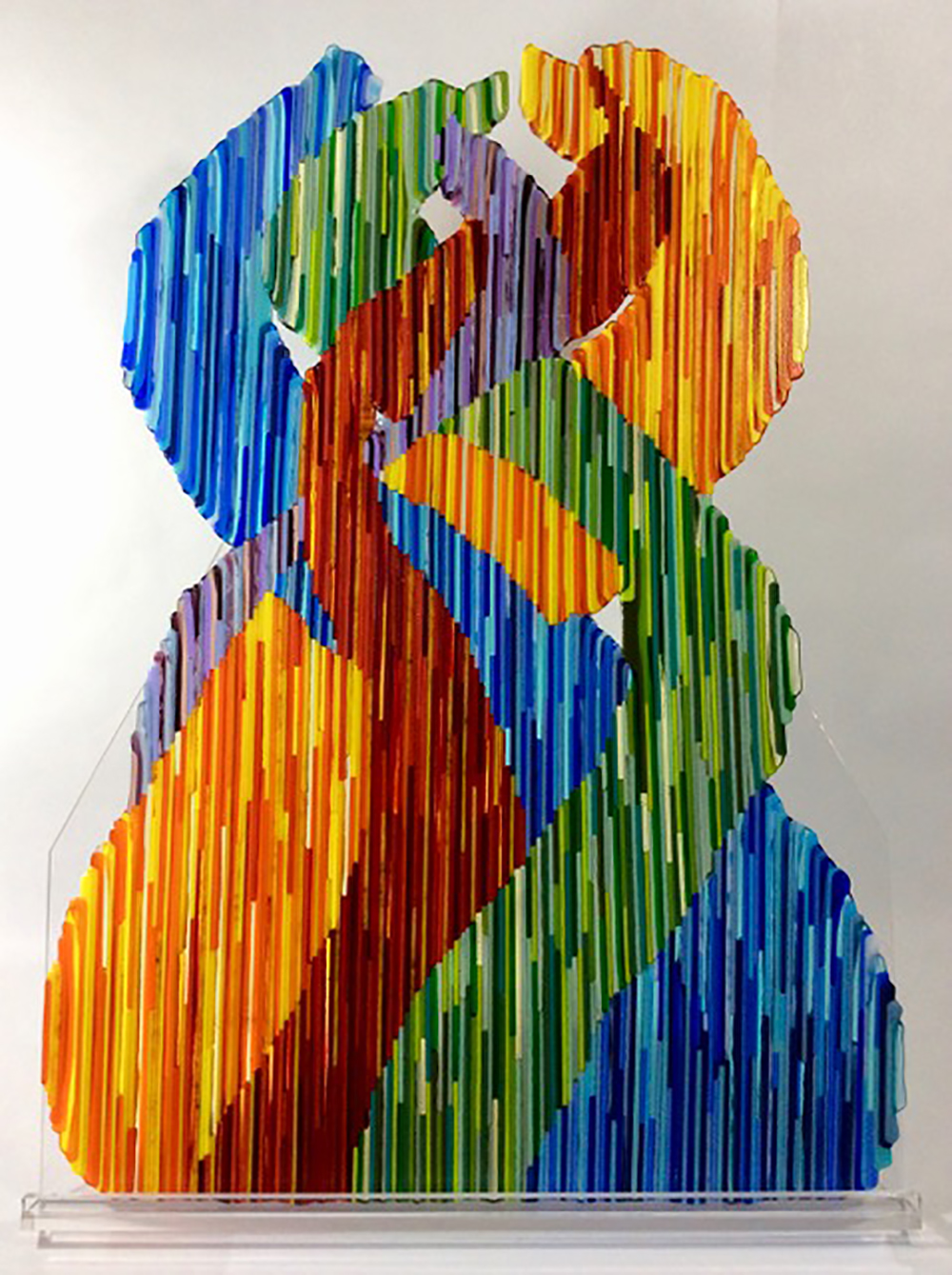 Nan Phillips, glass artist, sculptor and another former president of Texas Sculpture Association, could not agree more. “It’s everywhere, a billboard, a flower, trees, sunsets, buildings, how a sidewalk cracks. Art can be in everything and it can be everything.”
Nan Phillips, glass artist, sculptor and another former president of Texas Sculpture Association, could not agree more. “It’s everywhere, a billboard, a flower, trees, sunsets, buildings, how a sidewalk cracks. Art can be in everything and it can be everything.”
A simple change in perspective and how we see the world can renew our appreciation for how color, composition and the blending of elements impacts every aspect of our day. “The more aware you are of the art forms around you, the more present you are,” says Carlyn Ray, former glass blower at Chihuly Studio and owner of Dallas Glass Art.
As children, our fascination with objects and materials in the world around us were second-nature, an imprinted instinct from birth. So, our childhood is where we typically find the roots of our passions and our attraction to certain materials.
Concrete and Steel
“My father had a welding business,” Roger Belveal, futurist and sculptor, recalls, “and from the time I was a kid, I loved the smell of burnt metal in the morning. The creativity grabbed me very young that you could go into a shop with some tools, parts and raw materials and make something out of nothing.”
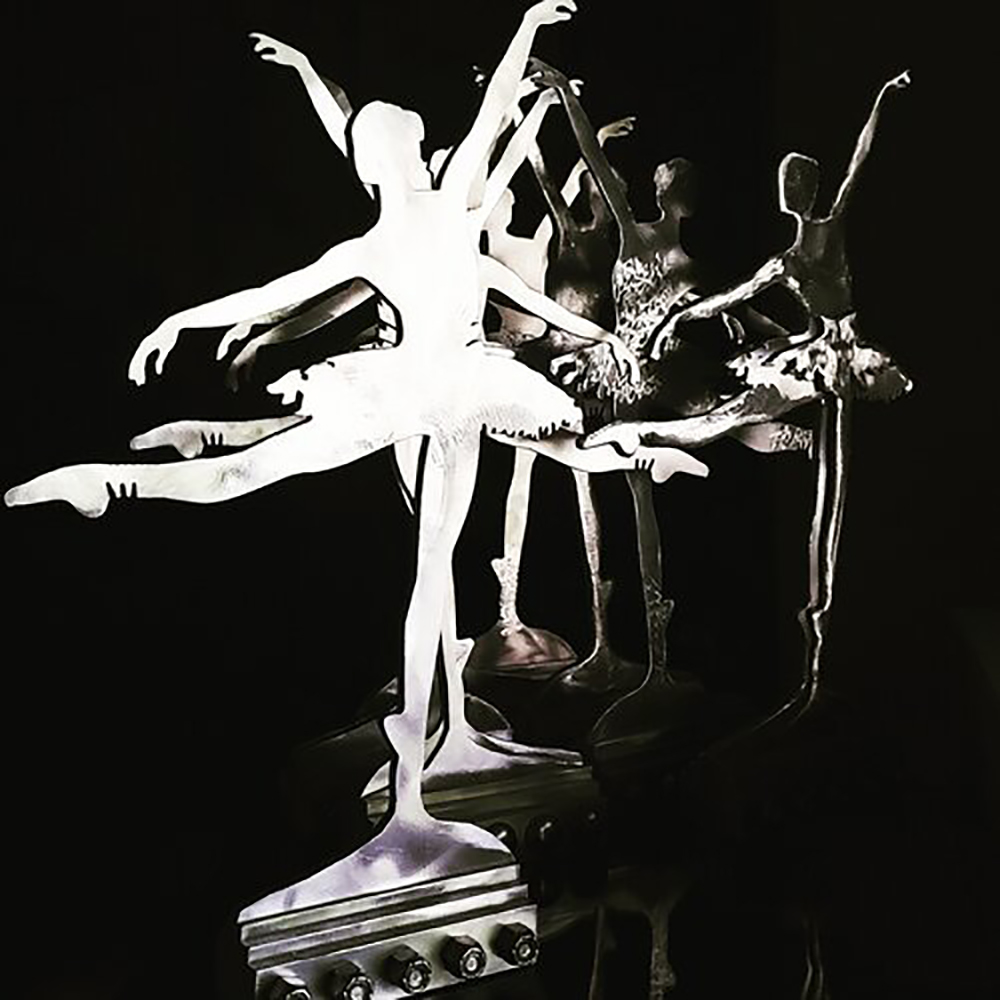 That experience led to an ongoing thread through Belveal’s life. “I love the look of metal, the more primitive the better, because the metal itself has color, texture, feel, smell and weight that I find really interesting.”
That experience led to an ongoing thread through Belveal’s life. “I love the look of metal, the more primitive the better, because the metal itself has color, texture, feel, smell and weight that I find really interesting.”
From there, a series of mentors introduced him to concrete, focusing on raw emotions and movement, and letting the audience use their imagination to fill in the details. And now, Belveal relishes incorporating everyday objects into his sculptures of concrete and steel to evoke greater connections and sometimes surprising meanings from his audience.
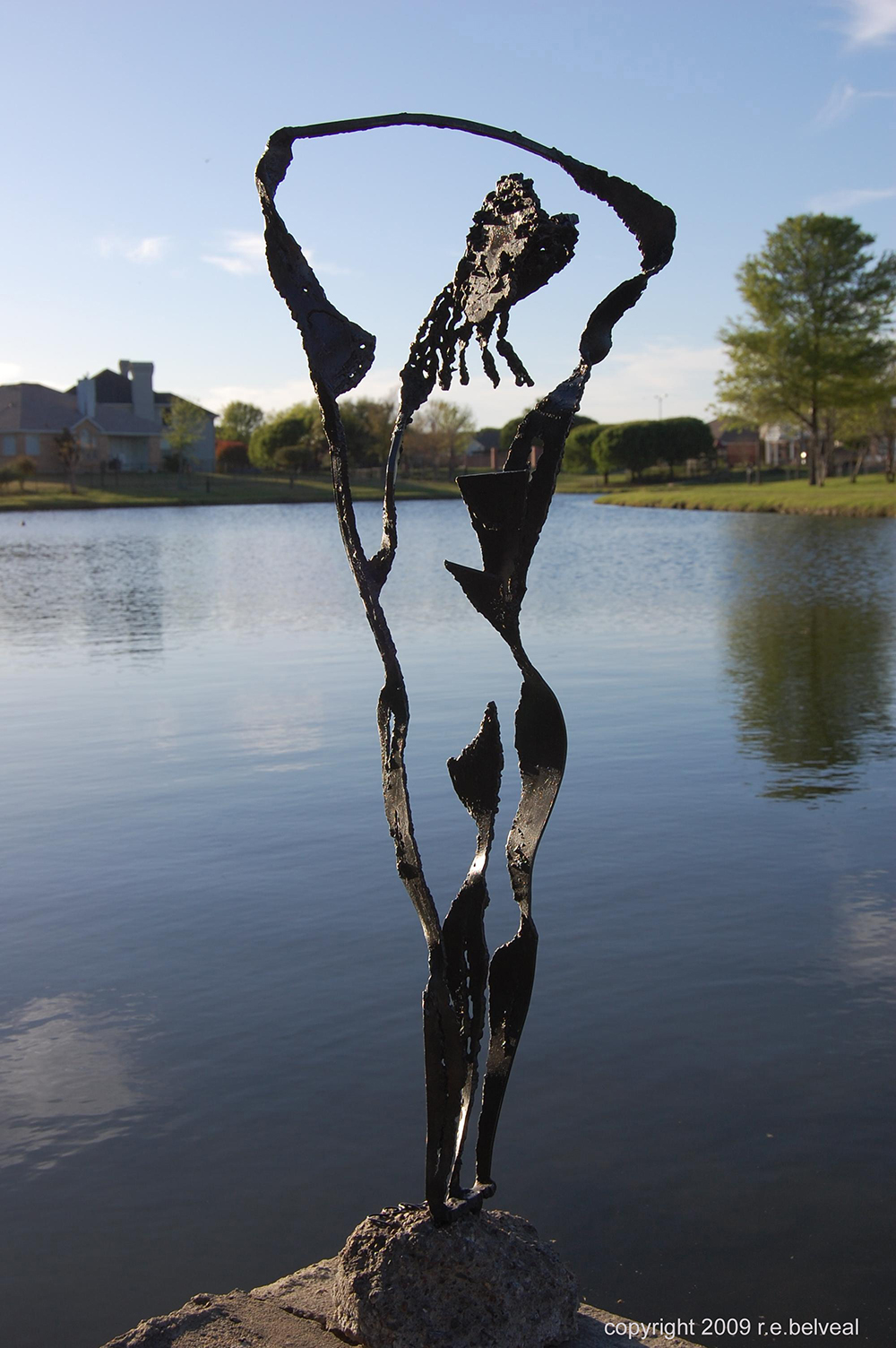 “I bring these objects in, almost like words in a poem, and let these objects stir together to create this soup of meaning,” Belveal says. “That’s when I realized how much people connected to the art when they saw an object. They had some past experience they connected to and suddenly it became theirs.”
“I bring these objects in, almost like words in a poem, and let these objects stir together to create this soup of meaning,” Belveal says. “That’s when I realized how much people connected to the art when they saw an object. They had some past experience they connected to and suddenly it became theirs.”
Leather
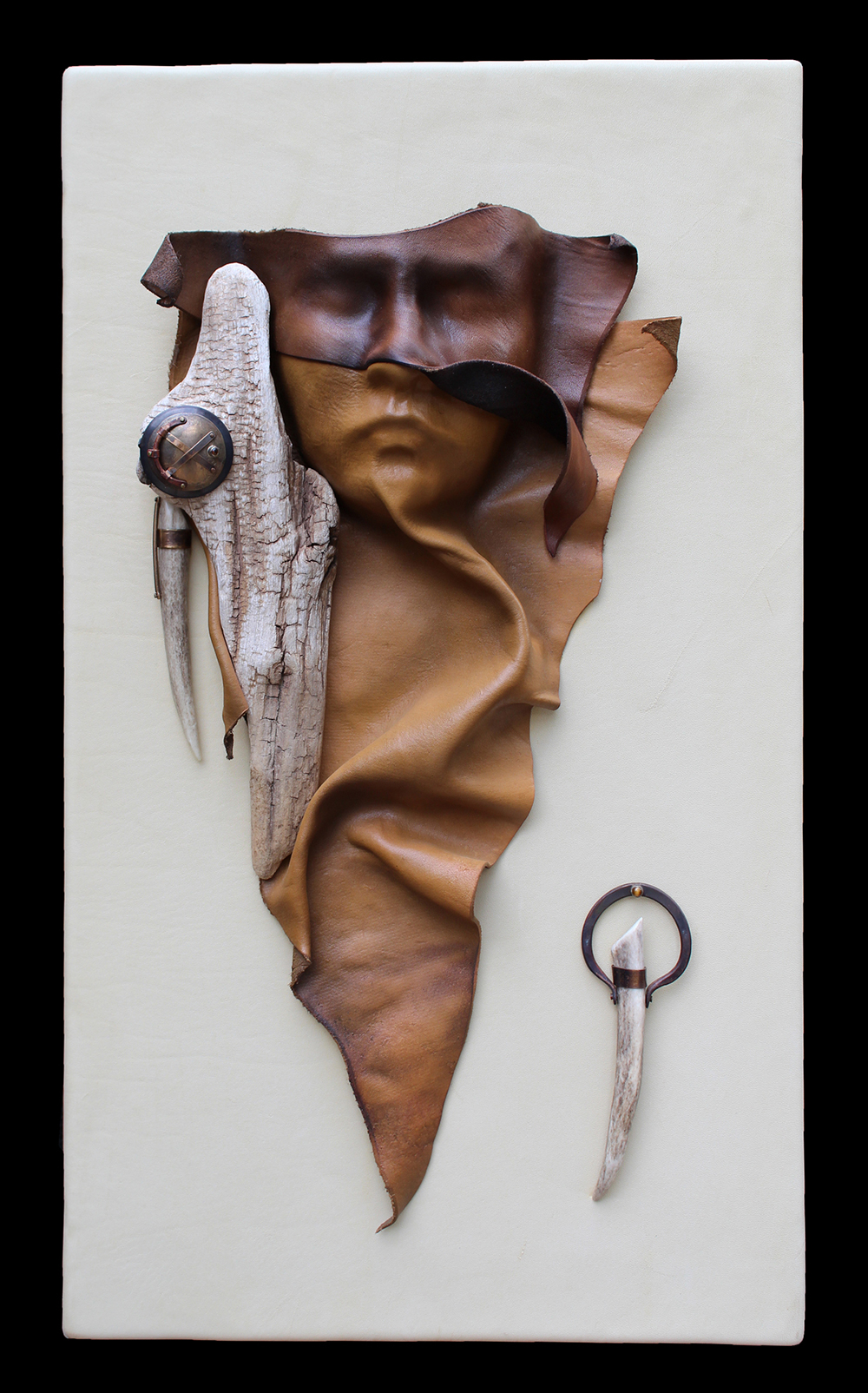
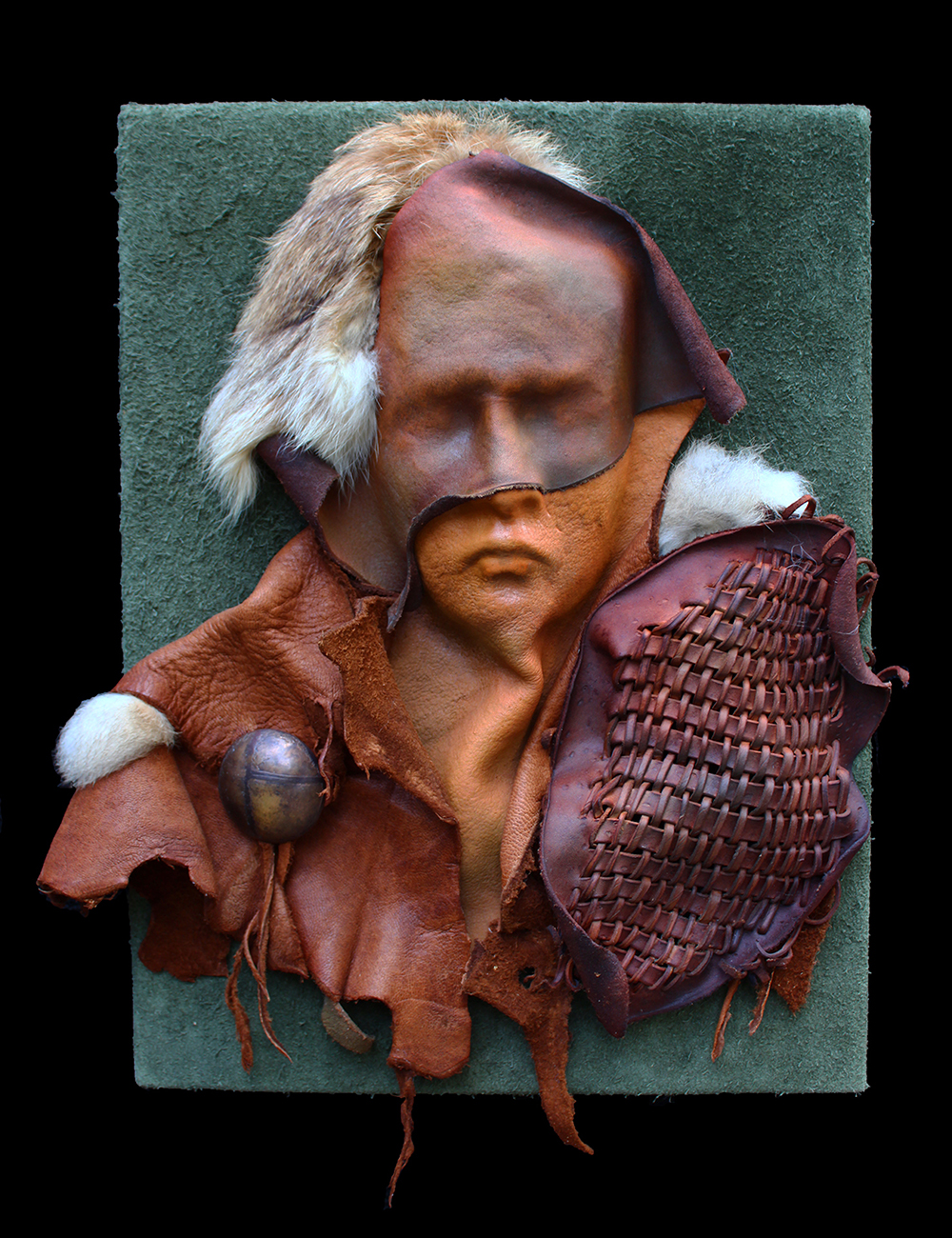 Hinchcliff discovered her love for leather at an early age, as well. “I was always drawn to leather. It’s very versatile,” Hinchcliff says. “I have always loved the native cultures and that’s a very prevalent material.”
Hinchcliff discovered her love for leather at an early age, as well. “I was always drawn to leather. It’s very versatile,” Hinchcliff says. “I have always loved the native cultures and that’s a very prevalent material.”
What started as pyrographic drawings on leather morphed into playing with the shape of leather, which then led to taking a sculpting class to learn how to make facial forms. “I sculpt the base, cast it in resin and then sculpt the leather over that,” Hinchcliff explains. “You soak [the leather] in hot water – the hotter the water the stiffer it dries. You moderate the temperature depending on the finish you want.”
And her work continues to evolve as she incorporates feathers, metal, driftwood and other materials into her pieces and explores other final products such as jewelry and functional pieces.
Glass
For Carlyn Ray, seeing a glass blower at age eight became the catalyst for a life-long love of glass. “Seeing how people manipulate the material is beautiful to watch. It’s like dancing, because everyone refines the glass differently,” Ray says. “The material itself is a mystery. Molten sand, at the temperature of lava, formed – with one’s breath, hand and gravity – into a crystal delicate form. Glass can transmit or reflect light, be solid and strong or thin and fragile. It can outlive us for hundreds of years or break in an instant.”
She adds, “We are in the age of glass. Glass is everywhere. Look at your skyline. You cannot really spend a day without glass in your life – a drinking glass, a mirror, your car – a single piece of glass can transform a room.”
 But becoming a glass blower doesn’t happen overnight. Ray started with a class from a master flame worker then played with small pieces of glass and a torch she hid in her college room. After graduating with a degree in 3D Art, she then poured her positive attitude and work ethic into taking classes, an apprenticeship and spending countless hours in the presence of glass.
But becoming a glass blower doesn’t happen overnight. Ray started with a class from a master flame worker then played with small pieces of glass and a torch she hid in her college room. After graduating with a degree in 3D Art, she then poured her positive attitude and work ethic into taking classes, an apprenticeship and spending countless hours in the presence of glass.
“It’s a really beautiful process,” Ray says. “If we try something new and it shatters, there’s a lot of grit and patience and determination we learn as glass blowers.”
Years later, her path led her to work for the Dale Chihuly team and later tour the world giving demonstrations for Corning Museum. Today, she owns her own studio, Dallas Glass Art, her own non-profit, Art Reaching Out, and her own line of custom artwork, Carlyn Ray Designs. Her motto: share creativity and spark imagination.
“I think glass can connect us to the light inside each of us,” Ray says. “There’s just something really beautiful and raw to glass when you share it with people.”
Phillips’ love for glass took a different path that eventually wound itself back to her childhood love for creating in general. Throughout life, she has explored different mediums – piano, clay, bronze and resin – but glass is where she chose to set up shop, literally. In her studio, Phillips’ teaches stained glass and fused glass to those who are drawn to its tantalizing properties.
“[Stained glass] is a giant puzzle where you make each piece one at a time,” Phillips explains. “The glass has to be cut and ground so it fits, just exactly. I spend a lot of time grinding and fitting to get each piece perfect. One of the things I find so fascinating is you can take a hammer and beat it into place … and it withstands it.”
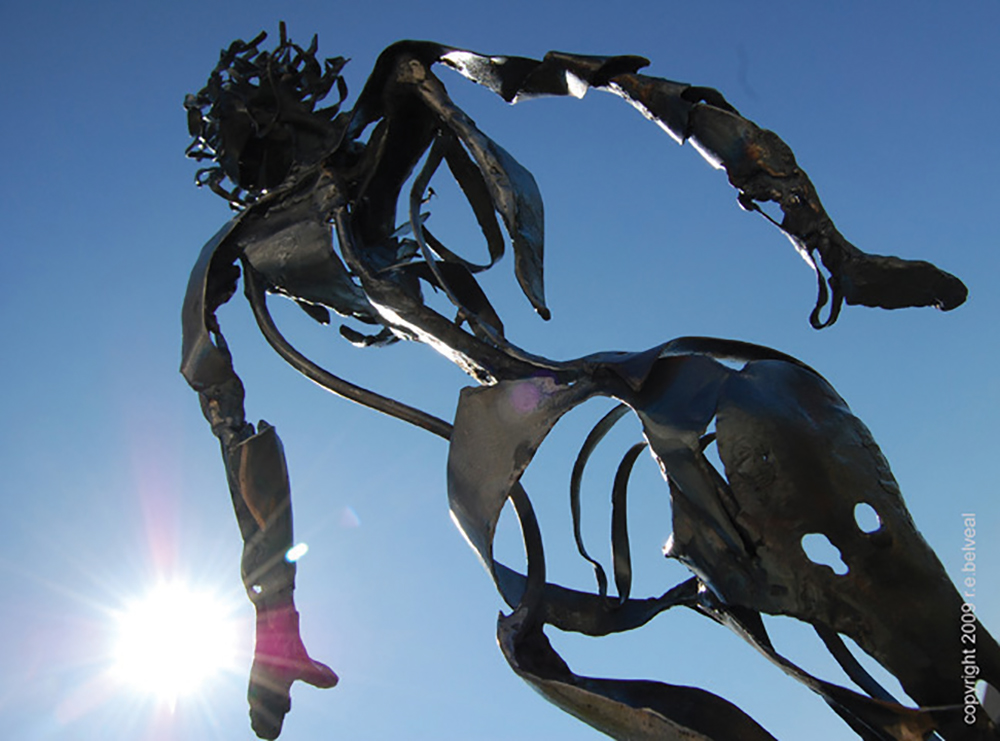 But fused glass, Phillips says, goes beyond putting things together to create something beautiful. “Fused glass is very technical, knowing what the glass is going to do in the kiln at various temperatures,” says Phillips. “The kind of glass and the color of glass will react to heat differently. How they fit together, the molds you have to build to keep everything in place. It’s very technical.”
But fused glass, Phillips says, goes beyond putting things together to create something beautiful. “Fused glass is very technical, knowing what the glass is going to do in the kiln at various temperatures,” says Phillips. “The kind of glass and the color of glass will react to heat differently. How they fit together, the molds you have to build to keep everything in place. It’s very technical.”
Regardless, Phillips is quick to stress, “Everybody can make art! Everybody can! Try all different kinds of mediums because you never know what you might end up with!”
Belveal says, “With what everyone is experiencing with COVID-19 and isolation, I think there’s an opportunity for art to provide some food for the soul.”
Even with materials readily available at home, Hinchcliff says the beauty of art is “you don’t need to go somewhere to get fulfilled. You’ve got it within you.”
So, in the iconic words of Mary Poppins, with just bits of paper and string – and whatever else entices us – perhaps we can create new beginnings.
